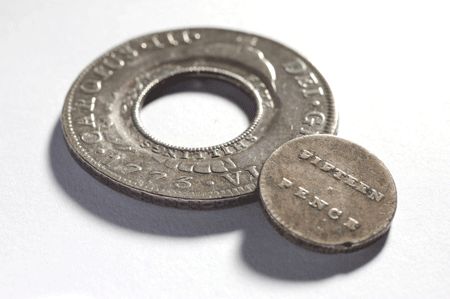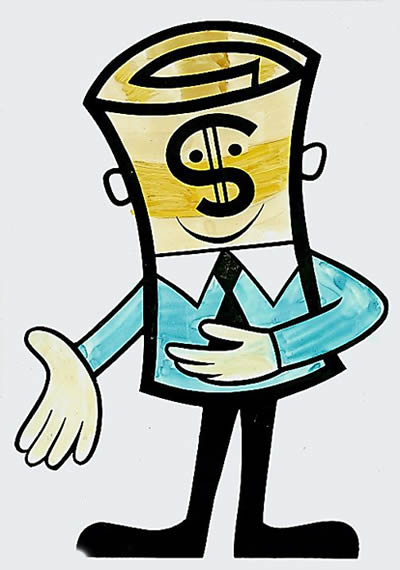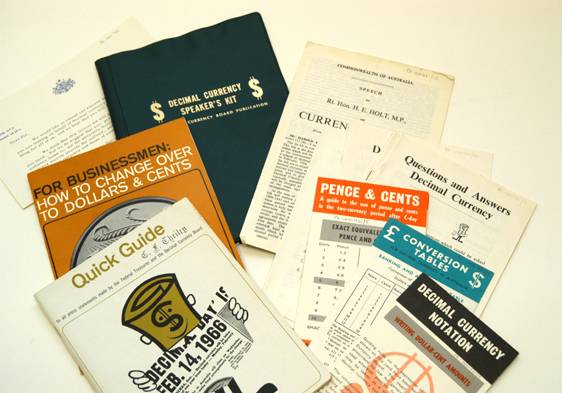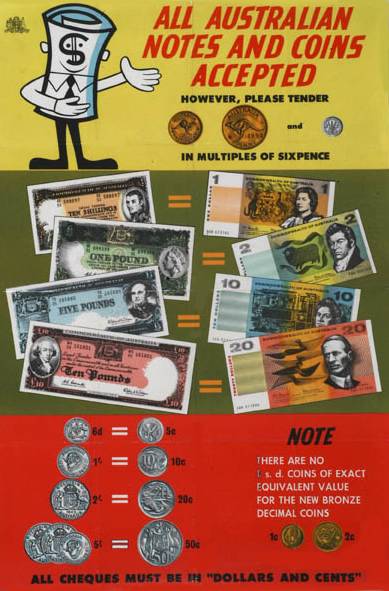March 17 - 23, 2013: Issue 102

Holey Dollar and Dump

Image showing the cartoon character Dollar Bill, circa 1965

Image showing educational material and brochures used during the 'Dollar Bill' campaign
Copyright George Repin 2013. All Rights Reserved.
Dollar Bill and Australians Keep The Wheels Of Industry Turning - courtesy Film Australia
FROM POUNDS AND PENCE TO DOLLARS AND CENTS
By George Repin
For Australians Monday, February 14, 1966 was a significant date. Change-over Day (C-Day) finally brought decimal currency to a community which had been used to a system in which twelve pennies made a shilling, twenty shillings made a pound and a guinea was twenty one shillings. As far back as 1822-23 it seemed that Australia would adopt the dollar as its basic currency. In the early days of the colony the Spanish dollar was widely available and in 1800 was proclaimed to be worth 5/-
(i.e. 5 shillings) In 1813 when 40,000 Spanish dollars arrived from India Governor Macquarie directed that small circular pieces be struck from the centres of the coins. The solid circle of silver was called a “Dump” and valued at 1/3 (i.e. one shilling and 3 pence) and stamped “fifteen pence” on the reverse. The remainder, known as the “Ring” or “Holey Dollar”: was valued at 5/- and was stamped “five shillings” on the reverse. In 1822 when large imports of whole Spanish dollars entered the colony Governor Brisbane saw advantages in making the dollar the national currency - but this did not happen until 1966, 144 years later. When the Holey Dollar and Dump were replaced by sterling coinage they were melted down. It is estimated that only 350 Holey Dollars and 1500 Dumps have survived – hence their great value as collectors’ items.
Realising the magnitude of the task of introducing a new currency system to the public the Commonwealth Government established a Decimal Currency Board to supervise and coordinate arrangements for the changeover.
To simplify the process it was decided to make the basic unit of currency equivalent in value to 10/- (10 shillings). There was great community interest in the name for the new basic unit with Federal Cabinet receiving 988 suggested names – including Australival, Southern Cross, Witchetty, Abo, Dec, Dix, Merino and Austral. The first choice was “Royal” but public pressure resulted in a re-think and the simple method of calling the 10/- unit a Dollar and the smallest unit a Cent was chosen.
Adoption of 10/- as the basic unit made it possible for the new dollar note and the old ten shilling note to circulate together during the transition period, expected to last 18 – 24 months. The £ note similarly could be used as a $2 note. The shilling coin, one tenth of 10/- became 10c and the two shilling coin – the “florin” – 20c. The sixpence also was not a problem at 5c, but there was no direct equivalent for the penny coin in the new system. The new 1 cent and 2 cent coins were equivalent to 1.2 and 2.4 cents respectively. Therefore, conversion tables were necessary for rounding prices involving pennies, up or down. The half-penny and the threepence in due course disappeared.
An extensive programme was undertaken to educate the general public. Pamphlets were delivered to every household and advertisements published in the press. Other programmes were directed to businesses because of the massive task of converting cash registers, adding machines, accounting machines, petrol pumps, franking machines, stamp-selling machines, public telephones, vending machines and other machines operated by coins.
As the banking system had to operate in the new system right from the start all banks were closed from 3 pm on Wednesday, February 9 until C-day on the following Monday to allow them to adjust their systems.
The change-over process is an interesting story in itself.

Image showing a brochure explaining the conversion of pounds, shillings and pence into dollars and cents